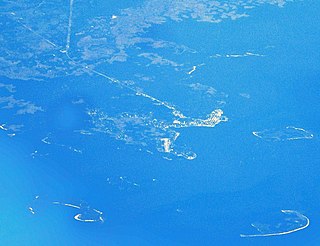
Cedar Key is a city in Levy County, Florida, United States. The population was 702 at the 2010 census. The Cedar Keys are a cluster of islands near the mainland. Most of the developed area of the city has been on Way Key since the end of the 19th century. The Cedar Keys are named for the eastern red cedar Juniperus virginiana, once abundant in the area.

Fort Ancient is a Native American earthworks complex located in Washington Township, Warren County, Ohio, along the eastern shore of the Little Miami River about seven miles (11 km) southeast of Lebanon on State Route 350. The site is the largest prehistoric hilltop enclosure in the United States with three and one-half miles (18,000 ft) of walls in a 100-acre (0.40 km2) complex. Built by the Hopewell culture, who lived in the area from the 200 BC to AD 400, the site is situated on a wooded bluff 270 feet (82 m) above the Little Miami. It is the namesake of a culture known as Fort Ancient who lived near the complex long after it was constructed.
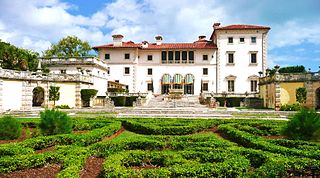
The Vizcaya Museum and Gardens, previously known as Villa Vizcaya, is the former villa and estate of businessman James Deering, of the Deering McCormick-International Harvester fortune, on Biscayne Bay in the present-day Coconut Grove neighborhood of Miami, Florida. The early 20th-century Vizcaya estate also includes extensive Italian Renaissance gardens, native woodland landscape, and a historic village outbuildings compound.
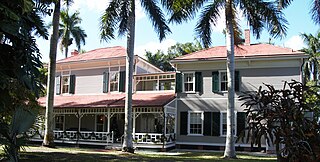
The Edison and Ford Winter Estates contain a historical museum and 21 acre botanical garden on the adjacent sites of the winter homes of Thomas Edison and Henry Ford beside the Caloosahatchee River in Southwestern Florida. It is located at 2350 McGregor Boulevard, Fort Myers, Florida.

North Central Florida is a region of the U.S. state of Florida which comprises the north-central part of the state and encompasses the North Florida counties of Alachua, Marion, Putnam, Bradford, Columbia, Dixie, Gilchrist, Hamilton, Lafayette, Levy, Madison, Suwannee, Taylor, and Union. The region's largest city is Gainesville, home of the University of Florida and center of the Gainesville metropolitan area, which is the largest metro area in North Central Florida. As of 2020, the region had a population of 575,622 people.

Cedar Key State Museum is an 18 acres (7.3 ha) Florida State Park located at 12231 SW 166th Court, Cedar Key, Florida. The museum displays items collected by Saint Clair Whitman, a local resident who established the first museum in his home. His collection included such items as sea shells and Indian artifacts. The museum displays these as well as dioramas depicting life around Cedar Key and contains a large collection of related historical information.

The 1867 Matheson House is a historic building in Gainesville, Florida, United States. It is located at 528 Southeast 1st Avenue. It was the home of James Douglas Matheson and Augusta Florida Steele Matheson, the daughter of Florida pioneer Augustus Steele, who founded Hillsborough County and Cedar Key. James Douglas Matheson owned a dry goods store in downtown Gainesville and was active in local and state politics, as was his son, eight-term Gainesville mayor Chris Matheson, who was also a state legislator.

The Sanford Grammar School, also known as the Sanford High School and as the Margaret K. Reynolds Building, is a historic school building located at 301 West 7th Street in Sanford, Florida, United States. Built in 1902, it was designed by Wilbur B. Talley in the Romanesque Revival style of architecture. Sanford architect Elton James Moughton designed the wings which were added in 1916. On November 23, 1984, it was added to the U.S. National Register of Historic Places.

The Clara Barkley Dorr House is an historic home in Pensacola, Florida. Built in 1871, it is located at 311 South Adams Street. On July 24, 1974, it was added to the U.S. National Register of Historic Places for its classical revival architecture.

The Sarasota School of Architecture, sometimes called Sarasota Modern, is a regional style of post-war modern architecture (1941–1966) that emerged on Florida's Central West Coast, in and around the city of Sarasota, Florida. It is characterized by open-plan structures, often with large planes of glass to facilitate natural illumination and ventilation, that address the unique indigenous requirements of the regional climate. Many of the architects who pioneered this style became world-renowned later in their careers, and several significant buildings remain in Sarasota today.
The Louisville and Nashville Depot is an historic Louisville and Nashville Railroad depot located at 206 Henry Street in Milton, Santa Rosa County, Florida. It was built in 1909 on the site of the former Pensacola and Atlantic depot built in 1882 which burned down in 1907. In 1973, the station was closed, but partially restored with a 1976 Bicentennial grant.

The Stuart Heritage Museum, at 161 Southwest Flagler Avenue in Stuart, Florida, is a local history museum located in an historic 2-story frame building built in 1901 by George W. Parks. Parks used the first floor of the building for his Geo. W. Parks Grocery and General Merchandise Store and second floor for his home. In 1913, the building became the Stuart Mercantile Company and in the 1960s after a series of uses, it became the Stuart Feed Store. In 1989, the Stuart Feed Store was listed in A Guide to Florida's Historic Architecture.
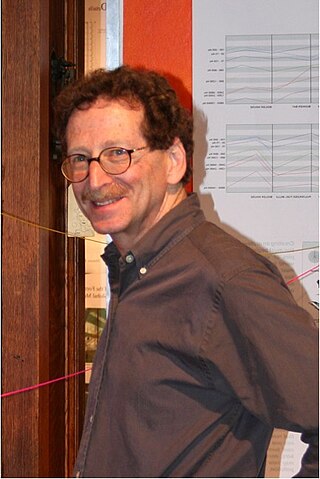
Andrew Scott Dolkart is a professor of Historic Preservation at the Columbia University Graduate School of Architecture, Planning and Preservation (GSAPP) and the former Director of the school's Historic Preservation Program. Professor Dolkart is an authority on the preservation of historically significant architecture and an expert in the architecture and development of New York City. He was described as someone who is "without peer among New York's architectural researchers" by architectural critic Francis Morrone and he has written extensively on this topic. Before joining the faculty at Columbia he held a position at the New York City Landmarks Preservation Commission and worked as a consultant. Dolkart holds a Bachelor of Arts degree from Colgate University (1973) and a Master of Science degree in Historic Preservation from Columbia University (1977); he is a popular lecturer and walking tour guide.

The Clapp Octagon House is an historic octagonal house located at 62 Lighthouse Avenue in the historic Lighthouse Park neighborhood on the north end of Anastasia Island in St. Augustine, Florida. It was built in 1886 for Rollin N. Clapp of St. Louis, Missouri.

The Museum of the Apopkans is located at 122 East Fifth Street, Apopka, Florida. It contains exhibits depicting the history of Apopka and Northwest Orange County Pioneers of Apopka, Apopka Historical Society and Museum website and is run by the Apopka Historical Society.

The Central Florida Railroad Museum is located at 101 South Boyd Street, Winter Garden, Florida in a former Tavares and Gulf depot built in 1913. It is open Tuesday-Saturday from 11:00am until 3:00pm, excluding holidays. The museum contains exhibits depicting Central Florida's railroading history, including a large collection of dining car china. It is part of the Winter Garden Downtown Historic District, which is listed on the National Register of Historic Places. The museum is operated by the Central Florida Railway Historical Society. and opened in 1983. The museum operates in conjunction with the Winter Garden Heritage Foundation.

The Micanopy Historical Society Museum is located at 607 Northeast 1st Avenue, Micanopy, Florida, United States. It contains materials relating to the history of the town. It is part of the Micanopy Historic District, which is listed on the National Register of Historic Places.

The Museum of Local History is located at 6866 Caroline St, Milton, Florida, and is operated by the Santa Rosa Historical Society. The museum exhibits depict the history of industry and fashion in Santa Rosa County. It is part of the Milton Historic District, which is listed on the National Register of Historic Places. Unfortunately the museum is rarely open as the Historical Society primarily uses the attached theatre for private weddings.

Tabby is a type of concrete made by burning oyster shells to create lime, then mixing it with water, sand, ash and broken oyster shells. Tabby was used by early Spanish settlers in present-day Florida, then by British colonists primarily in coastal South Carolina and Georgia. It is a man-made analogue of coquina, a naturally-occurring sedimentary rock derived from shells and also used for building.
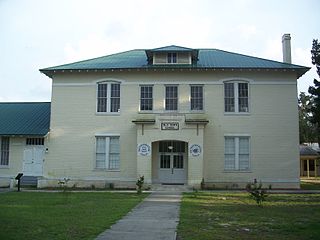
The former Old Town Elementary School is an historic two-story, four-classroom school building in Old Town, Dixie County, Florida. Built in 1909-1910 of bricks fired on site, it is the oldest public building in Dixie County. In 1930 the auditorium was built by George Levingston. In 1999, it was replaced by a new school. Today it is operated by the Dixie County Historical Society as the Dixie County Cultural Center, with space for its office, a local history museum and a library.




















